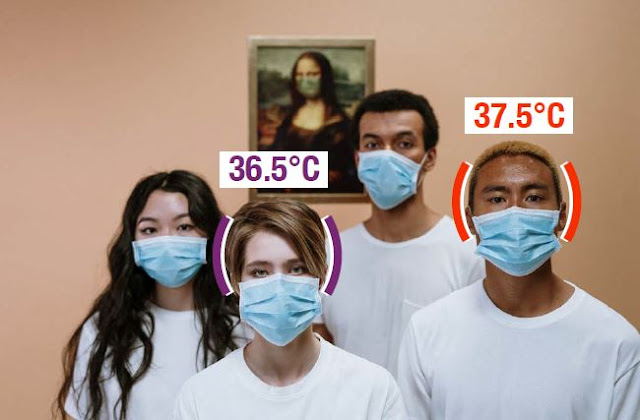Since the outbreak of Coronavirus, people have been advised to refrain from work or school, and minimize social contact, wear masks and be vigilant to hand hygiene. Other than those health workers and medical professionals, there is a lot of people taking risks going to their workplace to keep this city running.
Early detection of fever people (febrile people) and segregation is a must to prevent the spread of infectious diseases (COVID-19 or influenza) in workplaces or schools.
The best method will be a test kit per person, to perform an accurate screening, daily before going to work. However, it wouldn't be possible in any future.
According to the news reports and CDC reports, coronavirus cases come with high fever and dry cough, though not all. Elevated body temperature is one of the possible warnings of coronavirus.
How to enforce a body temperature check in your premise?
How to enforce a body temperature check for every visitor before they are entering public transports, buildings, factories, and schools?
There are different methods to check the temperature; they also come with different "normal body temperature".
- Mercury thermometer
- Infrared ear probe thermometer
- Infrared forehead thermometer
- Infrared thermal imaging

Guideline of thermometers
https://www.mdd.gov.hk/english/emp/emp_gp/files/thermometer_eng.pdf
What temperature you are measuring?
Fevering people have a higher core (body) temperature which simply refers to the blood temperature in brain and heart. While the mercury thermometer (oral method) remains the most accurate method and best reference to body core temperature of all, it is impossible to use this as a screening measure.
Infrared ear probe thermometer is simply not an effective way due to the close-contact of operators, the use of consumable, and the lack of accuracy due to many reasons.
Skin temperature can be measured at a distance by using infrared sensors in both handheld and camera settings. Infrared forehead thermometer measures forehead skin temperature may provide a slightly better accuracy reading if it is performed by a well-trained staff and regular black-body calibration.
Still, it is still far from practical to have students/workers lining up in rush hours for a forehead scanning; exposing the staff to have close contact is also a problem.
The final solution goes to Infrared Thermal Imaging
Infrared thermal imaging is widely adapted since the SARS outbreak in 2003, it measures multiple points of skin temperatures, at a distance up to 5-10m. The sensitivity has been greatly improved by both using better sensors and better algorithms or models since the data captured is huge.
By passing through a thermal camera, without stop by any counter or even slow down, hundreds of data points samples are taken on visitor's forehead, face, hands, legs, and any exposed skin. It is unnoticeable by visitors.
Infrared Thermal Imaging is well-proven and reliable
An uncooled infrared thermal imager can easily take over 50 readings/sec over 384 x 288 pixels, which is a 5.5M data/sec.
More data points mean machine intelligence can work out all the statistics throughout the whole human body to provide the best estimate to the true core body temperature.
The A.I. training model can be trained by the numerous sample on both body readings and surroundings at every minute to offset any change in environments.
Surveillance camera companies are now providing a wide range of infrared thermal imaging solutions to the market.
This is why Infrared Thermal Imaging counters are commonly seen in airport arrival halls during the outbreak of the diseases.

(IMPORTANT NOTE: You can only ever measure the temperatures of the surfaces with a thermal imager; you cannot look into something or through something.)
(To-be-continued)

No comments:
Post a Comment